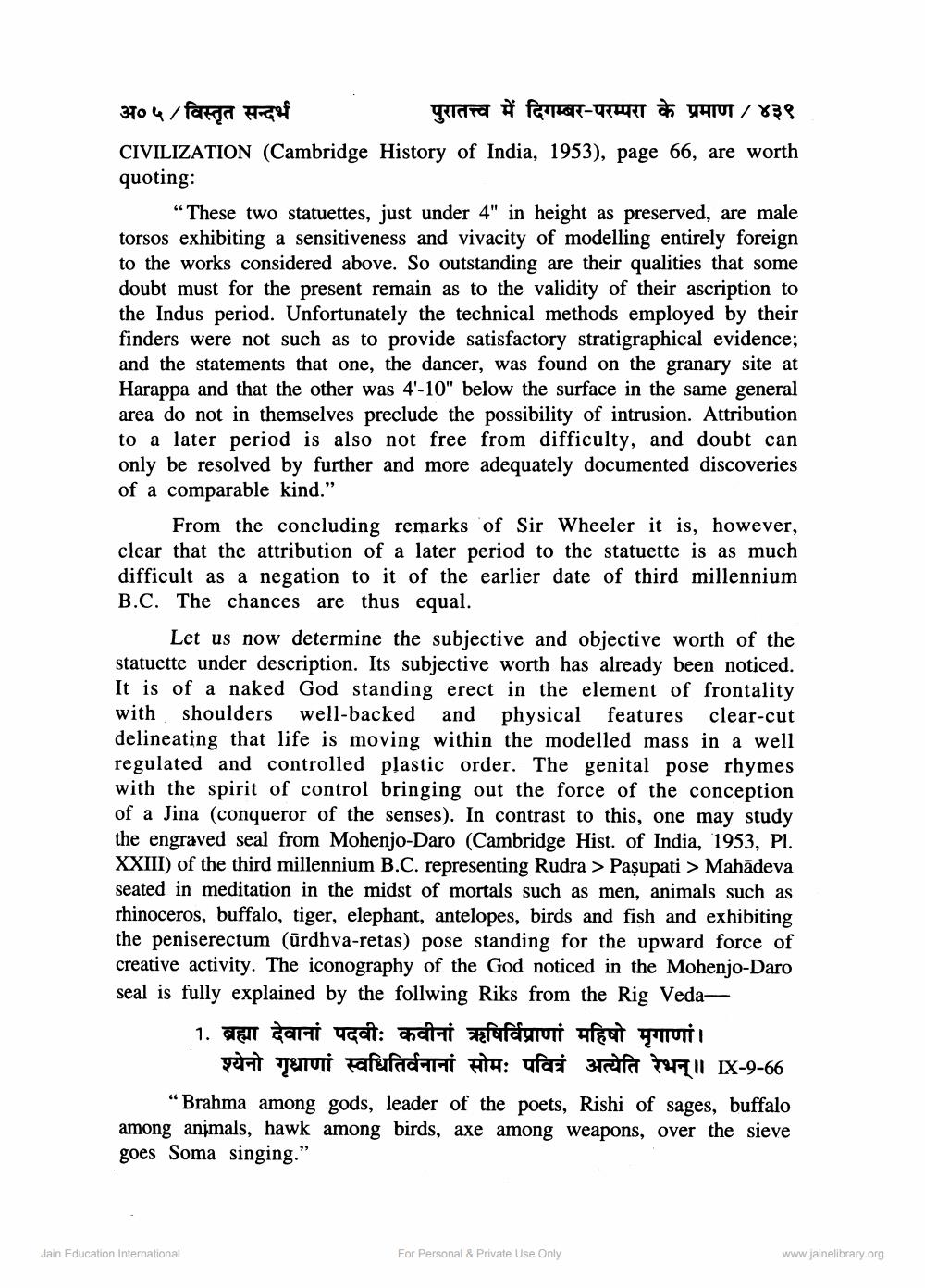________________
अ०५ / विस्तृत सन्दर्भ
पुरातत्त्व में दिगम्बर-परम्परा के प्रमाण / ४३९ CIVILIZATION (Cambridge History of India, 1953), page 66, are worth quoting:
"These two statuettes, just under 4" in height as preserved, are male torsos exhibiting a sensitiveness and vivacity of modelling entirely foreign to the works considered above. So outstanding are their qualities that some doubt must for the present remain as to the validity of their ascription to the Indus period. Unfortunately the technical methods employed by their finders were not such as to provide satisfactory stratigraphical evidence; and the statements that one, the dancer, was found on the granary site at Harappa and that the other was 4'-10" below the surface in the same general area do not in themselves preclude the possibility of intrusion. Attribution to a later period is also not free from difficulty, and doubt can only be resolved by further and more adequately documented discoveries of a comparable kind.”
From the concluding remarks of Sir Wheeler it is, however, clear that the attribution of a later period to the statuette is as much difficult as a negation to it of the earlier date of third millennium B.C. The chances are thus equal.
Let us now determine the subjective and objective worth of the statuette under description. Its subjective worth has already been noticed. It is of a naked God standing erect in the element of frontality with shoulders well-backed and physical features clear-cut delineating that life is moving within the modelled mass in a well regulated and controlled plastic order. The genital pose rhymes with the spirit of control bringing out the force of the conception of a Jina (conqueror of the senses). In contrast to this, one may study the engraved seal from Mohenjo Daro (Cambridge Hist. of India, 1953, Pl. XXIII) of the third millennium B.C. representing Rudra > Pasupati > Mahādeva seated in meditation in the midst of mortals such as men, animals such as rhinoceros, buffalo, tiger, elephant, antelopes, birds and fish and exhibiting the peniserectum (ūrdhva-retas) pose standing for the upward force of creative activity. The iconography of the God noticed in the Mohenjo-Daro seal is fully explained by the follwing Riks from the Rig Veda
1. ब्रह्मा देवानां पदवी: कवीनां ऋषिर्विप्राणां महिषो मृगाणां।
perai Tamuri Faffadhi H14: ufasi rifat tell IX-9-66 “Brahma among gods, leader of the poets, Rishi of sages, buffalo among anjmals, hawk among birds, axe among weapons, over the sieve goes Soma singing."
Jain Education International
For Personal & Private Use Only
www.jainelibrary.org




